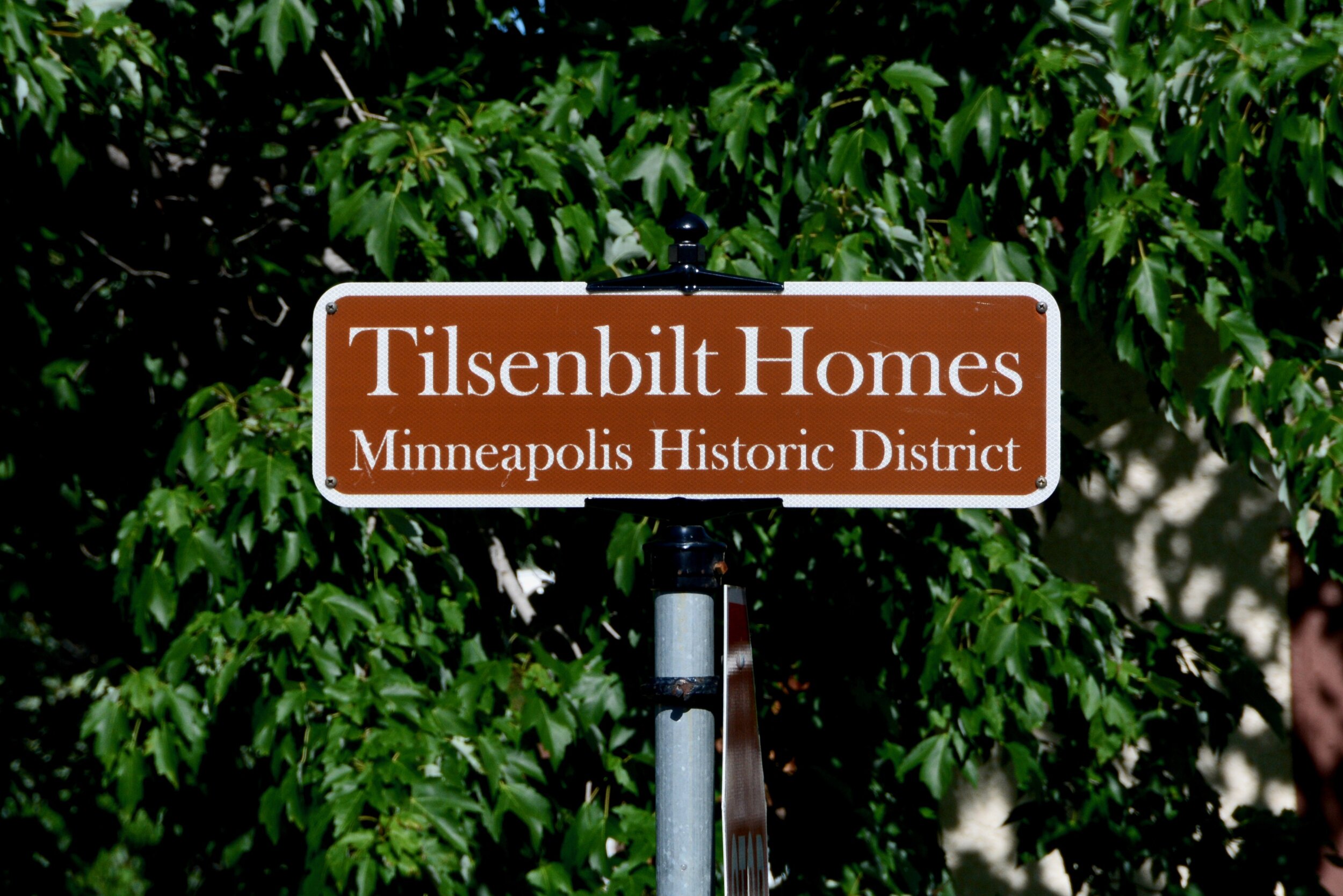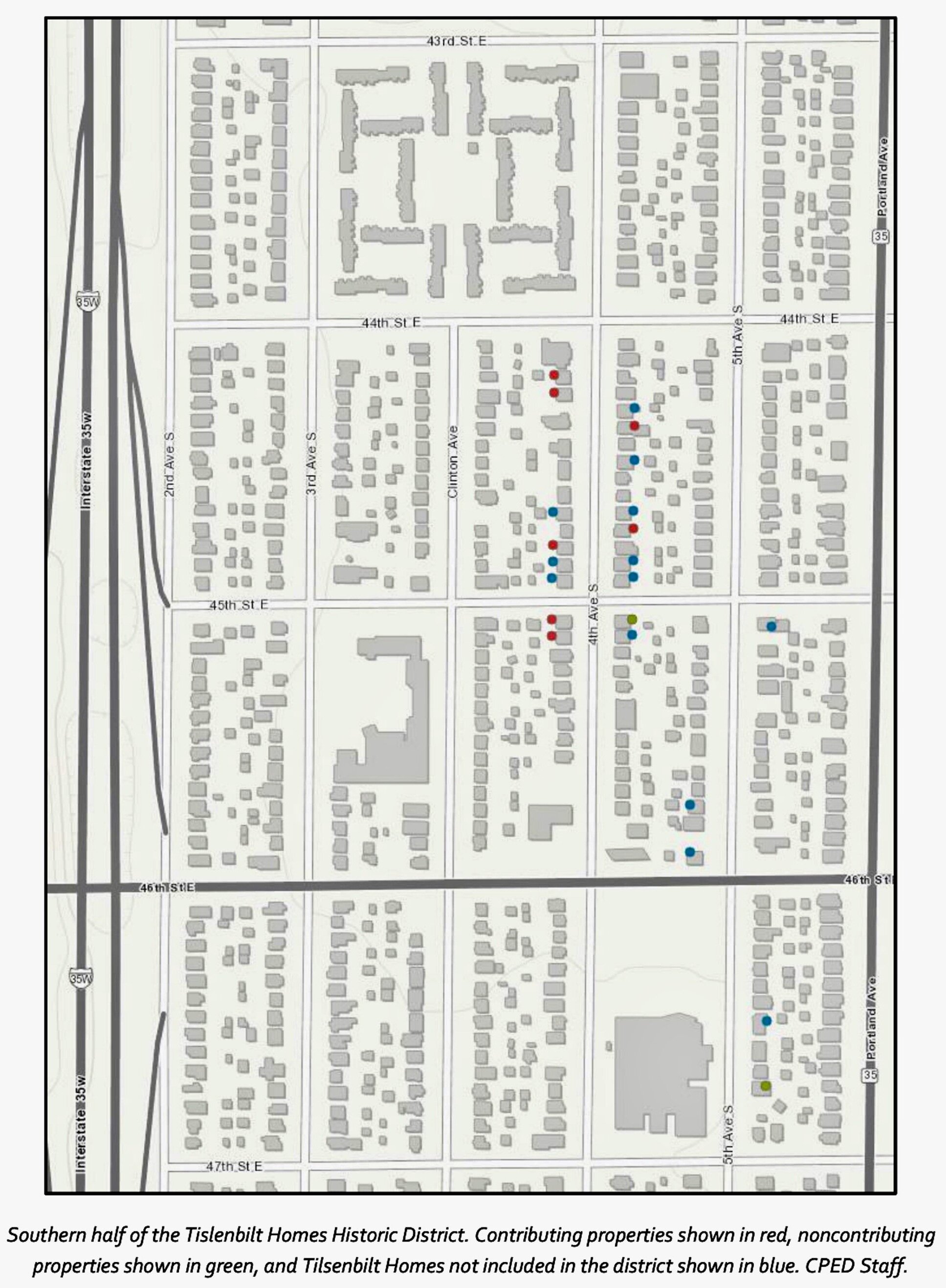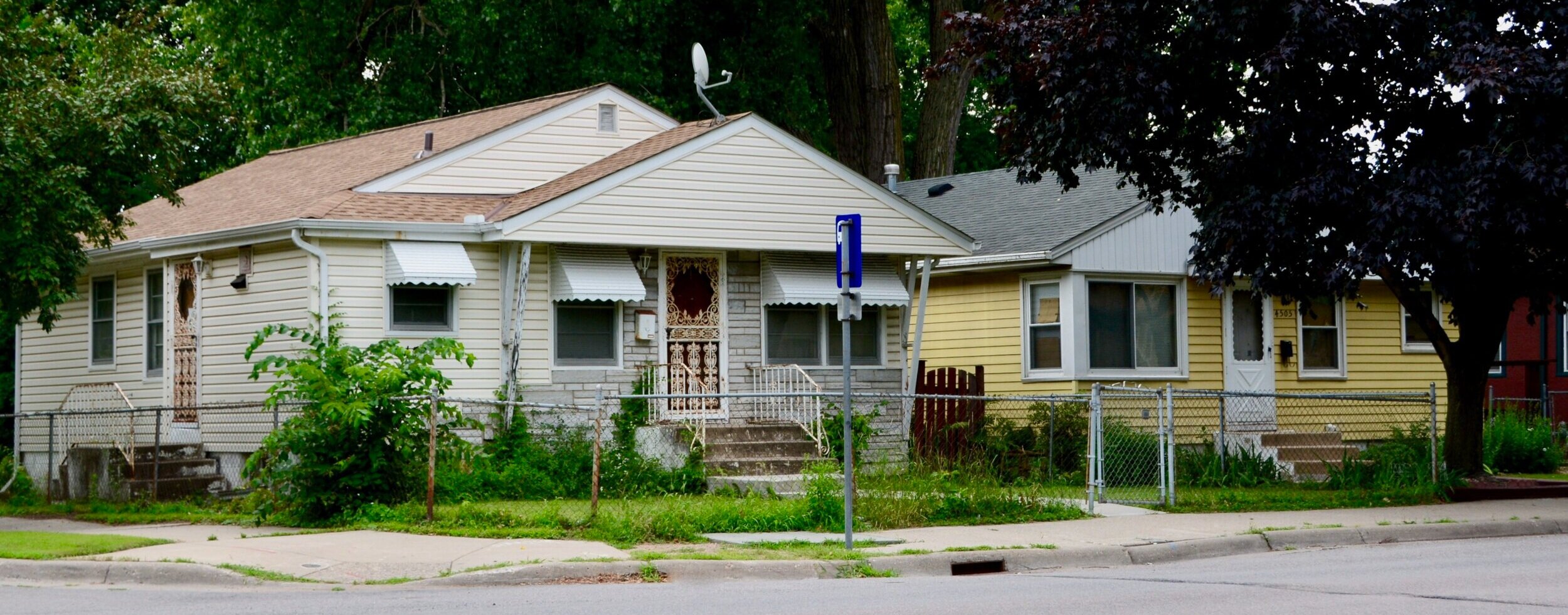Uncovering the story behind Tilsenbilt Homes Historic District
By Steve Date
Race-related conflict is not new to south Minneapolis. In fact, prejudice and racial discrimination is a big part of Field/Regina/Northrop’s history. One example of this is our storied past regarding housing patterns. Restrictive and exclusionary covenants and “red-lining” policies prevented people of color from owning homes in many Minneapolis neighborhoods, including much of FRN, through the first half of the 20th century.
African Americans began moving to Minneapolis and other northern cities in large numbers in the 1930s as part of the “Great Migration” from the south. Minneapolis became a highly segregated city — by design. Banks and government mortgage lenders, such as FHA and VA, developed discriminatory policies and practices — informally and covertly at first, but more codified as time went on.
After WWII, Black families continued to move to the Twin Cities from the south, hoping for better economic opportunities. But if they wanted to buy a home, their chances were virtually zero. According to the City of Minneapolis Heritage Preservation site, “Out of over 9,500 single-family homes and duplexes built in Minneapolis between 1946 and 1952, fewer than 20 were sold to African-American buyers.” Edward Tilsen, in a 1954 Minneapolis Tribune interview, put the number at 12.
In that segregated post-war decade, there were three main Black residential areas in Minneapolis — the near Northside, Seven Corners and the Southside, which included the Regina neighborhood. According to the Minnesota Historical Society, “From the 1930s to the 1970s, an African-American neighborhood flourished on the city’s Southside, between East 34th and 46th Streets and from Nicollet Avenue to Chicago Avenue.” Fourth Avenue South was the heart of the Southside Black community.
In the early 1950s, Archie Givens, Sr., an African-American realtor, bought more than 60 lots and recruited Edward Tilsen, a Jewish, white real estate developer, to build homes on 3rd, 4th and 5th Avenues in the Regina and Bryant neighborhoods. Givens’ idea was to build modest-sized, affordable houses and establish a stable neighborhood of owner-occupied homes, primarily for Black people, but open to any race. They built 53 homes, nearly all bought by African-American or mixed-race families. Many of the houses were located south of 42nd St., in an area that was previously mostly white.
The Givens/Tilsen project was groundbreaking in more than one sense. It was “the nation’s first federally supported commercial housing development open to homebuyers of all races,” according to the City of Minneapolis.
In 2017, the Minneapolis City Council voted to grant historic designation to the Tilsenbilt Homes in the Regina and Bryant neighborhoods. This designation was the result of efforts by residents in 2015 who wanted to preserve African-American history in these neighborhoods. Owners of Tilsenbilt houses were asked if they would agree to the regulations on renovations and other changes and be included in the official historic designation. About two-thirds of them opted in. Small brown signs identify the Tilsenbilt Homes Minneapolis Historic District.
The Tilsenbilt Company, now managed by Edward Tilsen’s great-grandson, Geoff, has built or remodeled thousands of homes in Minnesota since 1952.
Archie Givens, Sr., went on to become a successful real estate developer and is known as the first African-American millionaire in Minneapolis. He and his wife, Phebe, started the Archie and Phebe Mae Givens Foundation in 1972.
Sources: Kingfield Neighborhood Association, Minneapolis Heritage Preservation Commission, MinneapolisHistorical.org, Minneapolis Tribune, Minnesota Historical Society, The Southwest Journal, Minneapolis StarTribune.






